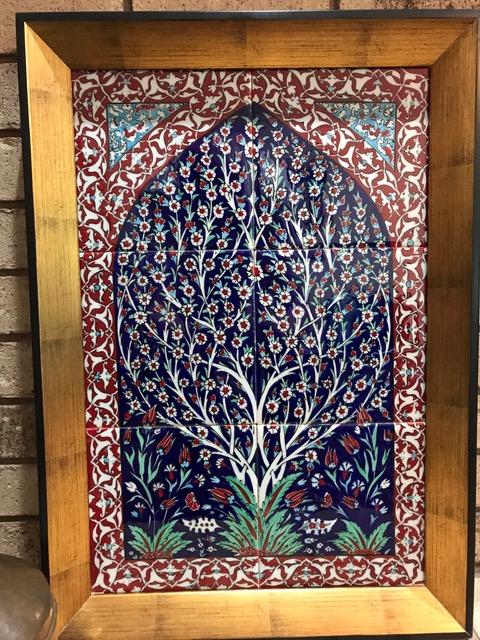
(Wikimedia Commons public domain image)
“Hannah’s Adversity and Peninnah’s Redemption,” written by Loren Blake Spendlove
Abstract: Most biblical students are familiar with the story of Hannah, who after years of barrenness, finally gave birth to the prophet Samuel. Some will remember her adversary, Peninnah, who allegedly tormented Hannah to tears. My objective in this article is to reclaim Peninnah’s good name by reinterpreting the passage found in 1 Samuel 1:6.
“Interpreting Interpreter: Redeeming Peninnah,” written by Kyler Rasmussen
This post is a summary of the article “Hannah’s Adversity and Peninnah’s Redemption” by Loren Spendlove in Volume 53 of Interpreter: A Journal of Latter-day Saint Faith and Scholarship. An introduction to the Interpreting Interpreter series is available at https://interpreterfoundation.org/interpreting-interpreter-on-abstracting-thought/.
The Takeaway: Spendlove reframes the biblical story of Hannah, the mother of Samuel, and Peninnah, who is alleged to have tormented Hannah for her infertility. He argues that the Hebrew noun tsaratah in 1 Samuel 1:6 should be translated as “adversity” rather than “adversary”, leaving no reason to interpret Peninnah as the story’s villain.

(Wikimedia Commons public domain photo)
Some of you will find this interesting:
I myself have invested a fair amount of energy in the topic, including this:
Asherah was the chief goddess of the Canaanites. She was El’s wife and the mother and wet nurse of the other gods. At least some Israelites worshipped her over a period from the conquest of Canaan in the second millennium before Christ to the fall of Jerusalem in 586 BC (the time of Lehi’s departure with his family). Asherah was associated with trees—sacred trees. The rabbinic authors of the Jewish Mishna (second–third century ad) explain the asherah as a tree that was worshipped. In 1 Nephi 11, Nephi considers the meaning of the tree of life as he sees it in vision. In answer, he receives a vision of “a virgin, . . . the mother of the Son of God, after the manner of the flesh.” The answer to his question about the meaning of the tree lies in the virgin mother with her child. The virgin is the tree in some sense and Nephi accepted this as an answer to his question. As an Israelite living at the end of the seventh century and during the early sixth century before Christ, he recognized an answer to his question about a marvelous tree in the otherwise unexplained image of a virginal mother and her divine child—not that what he saw and how he interpreted those things were perfectly obvious. What he “read” from the symbolic vision was culturally colored. Nephi’s vision reflects a meaning of the “sacred tree” that is unique to the ancient Near East. Asherah is also associated with biblical wisdom literature. Wisdom, a female, appears as the wife of God and represents life.
But the article above is essentially a rather severe condensation of this fuller and more academic article, which I very much prefer:
“Nephi and His Asherah: A Note on 1 Nephi 11:8-23”
You can watch a lecture that I delivered on the topic, here:
“Daniel C. Peterson on “A Divine Mother in the Book of Mormon?””
This is a presentation by Daniel C. Peterson on “A Divine Mother in the Book of Mormon?” at the conference “Mormonism and the Temple: Exploring an Ancient Religious Tradition,” on October 29, 2012, at Utah State University in Logan, Utah.
And here is a very brief newspaper column on the subject:
“How Nephi understood the Tree of Life (and why the Book of Mormon is an ancient record)”

Will this get much play in the national press? I hope so, but I doubt it:
But National Review, at least, has picked it up:
“BYU Investigation Finds No Evidence That Fans Hurled Racial Slur at Duke Volleyball Player”

With friends, we had dinner last night at the Market Street Grill in Salt Lake City (one of my favorite restaurants) and then attended a program at Abravanel Hall that extended thanks to Thierry Fischer, the Swiss conductor who is entering into the last year of a fourteen-year stint as the well-loved music director of the Utah Symphony. It was called “A Toast to Thierry,” and it included the world premiere of a new, commissioned piece by Augusta Read Thomas called “Illuminations: Gratitude Fanfare”; “Trois pièces bréves,” by Jacques Ibert; the fourth movement of Des Canyons aux étoiles, by Olivier Messiaen; the first movement of Felix Mendelssohn’s String Quartet No. 2 in A minor, Op. 13; and the first and fourth movements of Joseph Haydn’s Symphony No. 96 in D Major, “The Miracle.” There were also a couple of talks and quite a bit of humor. And it was all followed by refreshments and, for those who remained, big band music from members of the Symphony and an opportunity to dance.

(Wikimedia Commons public domain image)
I’ve seen it argued that one of the (lesser) reasons why we should attend church is because, once they’ve become adults, it’s only at church that most people ever sing. So, with that idea still in the back of my mind, this article from the prominent Evangelical Protestant magazine Christianity Today caught my interest:
I would imagine that the author of the article, W. David O. Taylor, is aware of what C. S. Lewis said on a closely related matter. Here is a concise article summarizing Lewis’s view:
“C.S. Lewis and the Role of the Physical Body in Prayer”
Incidentally, I found the Christianity Today article in at least the general vicinity of the Christopher Hitchens Memorial “How Religion Poisons Everything” File©, which is also where I located these appalling items:










